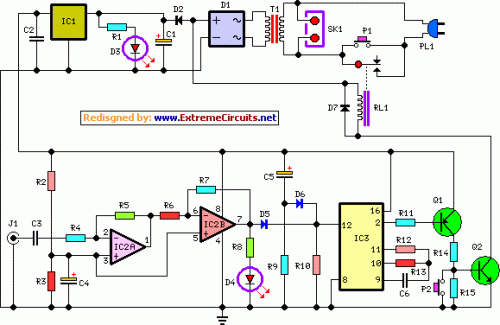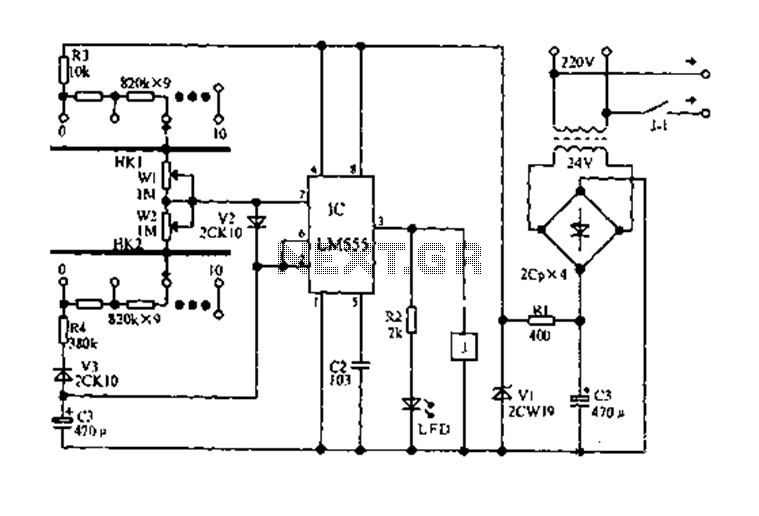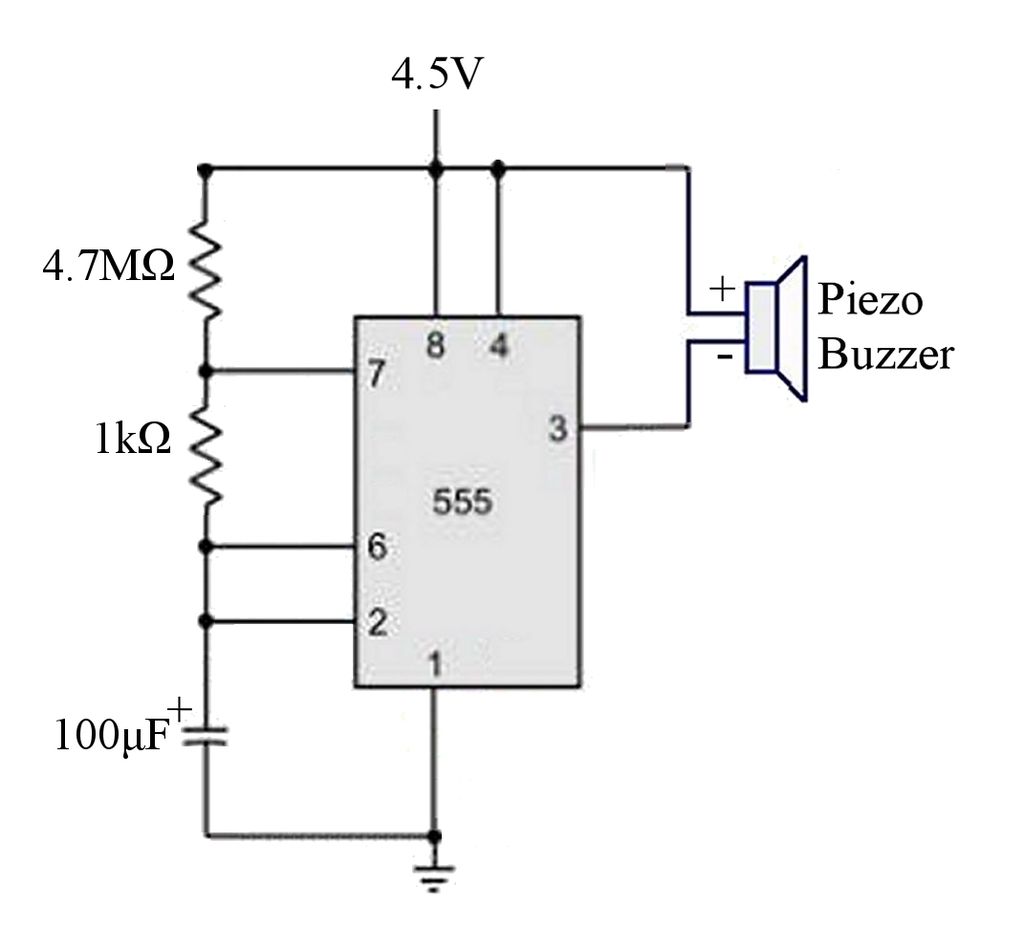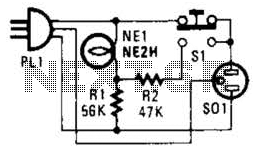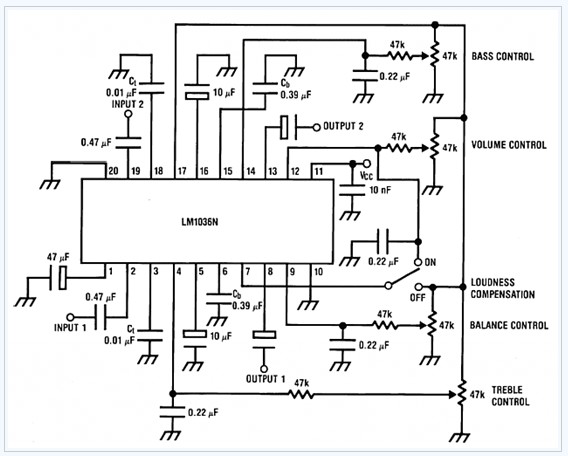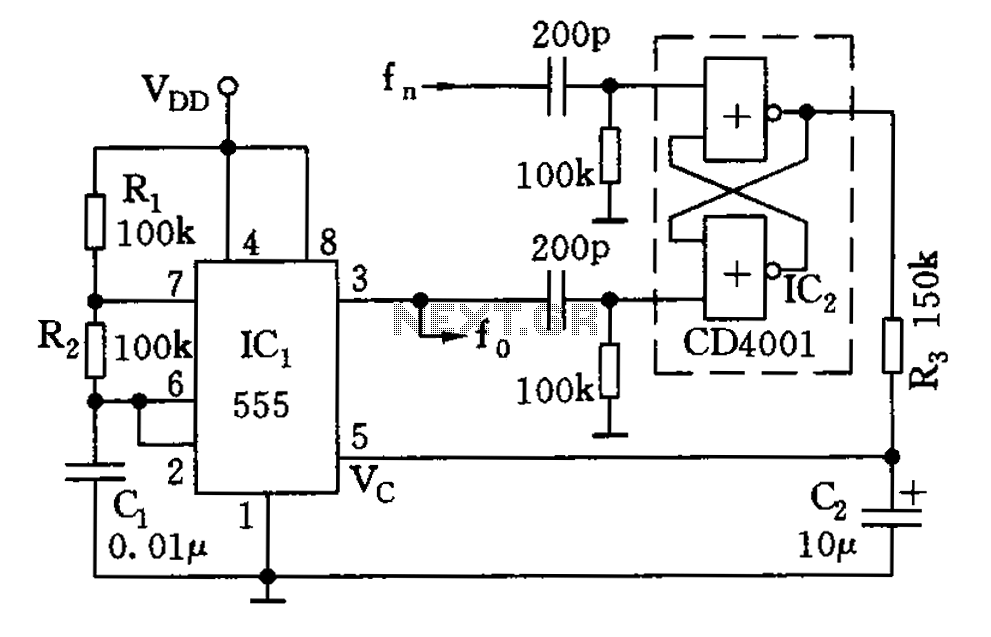
Af Power Oscillator Circuit
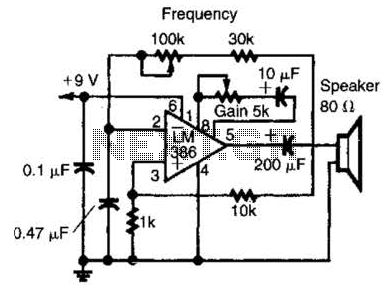
An LM386 audio power IC is configured as a feedback oscillator. It can operate with a supply voltage ranging from 6 to 12 V. The circuit is capable of driving a loudspeaker.
The LM386 is a low-voltage audio power amplifier that is commonly utilized in various audio applications. In this configuration as a feedback oscillator, it takes advantage of its gain characteristics to produce oscillations. The circuit typically includes a few additional components such as resistors, capacitors, and possibly a diode, which help to establish the feedback loop necessary for oscillation.
The supply voltage range of 6 to 12 V allows for flexibility in power source selection, making it suitable for battery-operated devices or other low-voltage applications. The feedback mechanism can be adjusted by varying the resistor and capacitor values, which will influence the frequency and amplitude of the oscillation produced.
When driving a loudspeaker, the output stage of the LM386 provides sufficient power to drive small to medium-sized speakers effectively. The output signal can be further filtered or modified using additional passive components to shape the audio output according to specific requirements.
In summary, this circuit design utilizing the LM386 as a feedback oscillator is a versatile solution for generating audio signals, capable of driving a loudspeaker within the specified voltage range. An LM386 audio power IC is set up as a feedback oscillator. Any supply from 6 to 12 V can be used. The circuit can drive a loudspeaker. 🔗 External reference
The LM386 is a low-voltage audio power amplifier that is commonly utilized in various audio applications. In this configuration as a feedback oscillator, it takes advantage of its gain characteristics to produce oscillations. The circuit typically includes a few additional components such as resistors, capacitors, and possibly a diode, which help to establish the feedback loop necessary for oscillation.
The supply voltage range of 6 to 12 V allows for flexibility in power source selection, making it suitable for battery-operated devices or other low-voltage applications. The feedback mechanism can be adjusted by varying the resistor and capacitor values, which will influence the frequency and amplitude of the oscillation produced.
When driving a loudspeaker, the output stage of the LM386 provides sufficient power to drive small to medium-sized speakers effectively. The output signal can be further filtered or modified using additional passive components to shape the audio output according to specific requirements.
In summary, this circuit design utilizing the LM386 as a feedback oscillator is a versatile solution for generating audio signals, capable of driving a loudspeaker within the specified voltage range. An LM386 audio power IC is set up as a feedback oscillator. Any supply from 6 to 12 V can be used. The circuit can drive a loudspeaker. 🔗 External reference
Warning: include(partials/cookie-banner.php): Failed to open stream: Permission denied in /var/www/html/nextgr/view-circuit.php on line 713
Warning: include(): Failed opening 'partials/cookie-banner.php' for inclusion (include_path='.:/usr/share/php') in /var/www/html/nextgr/view-circuit.php on line 713
